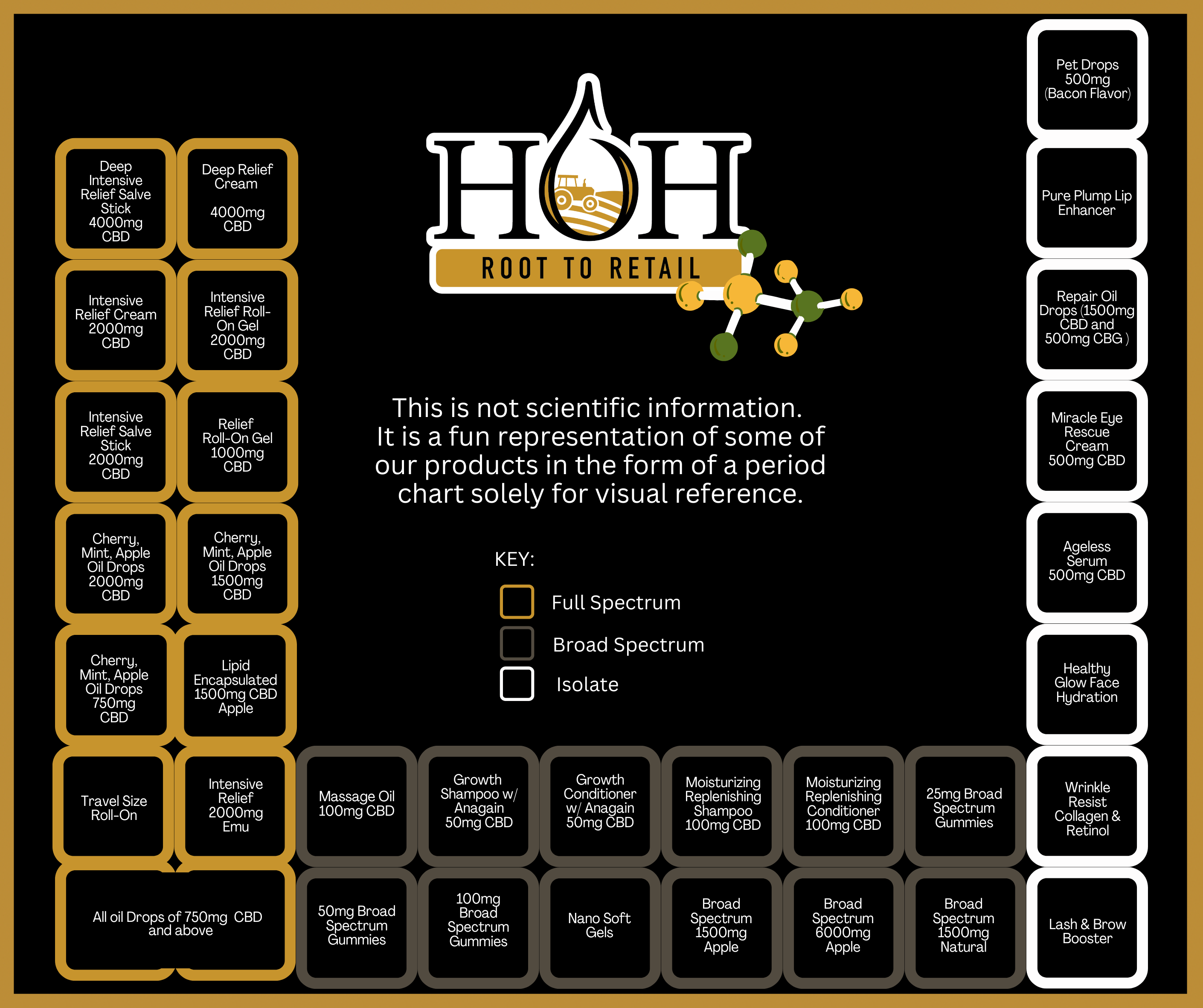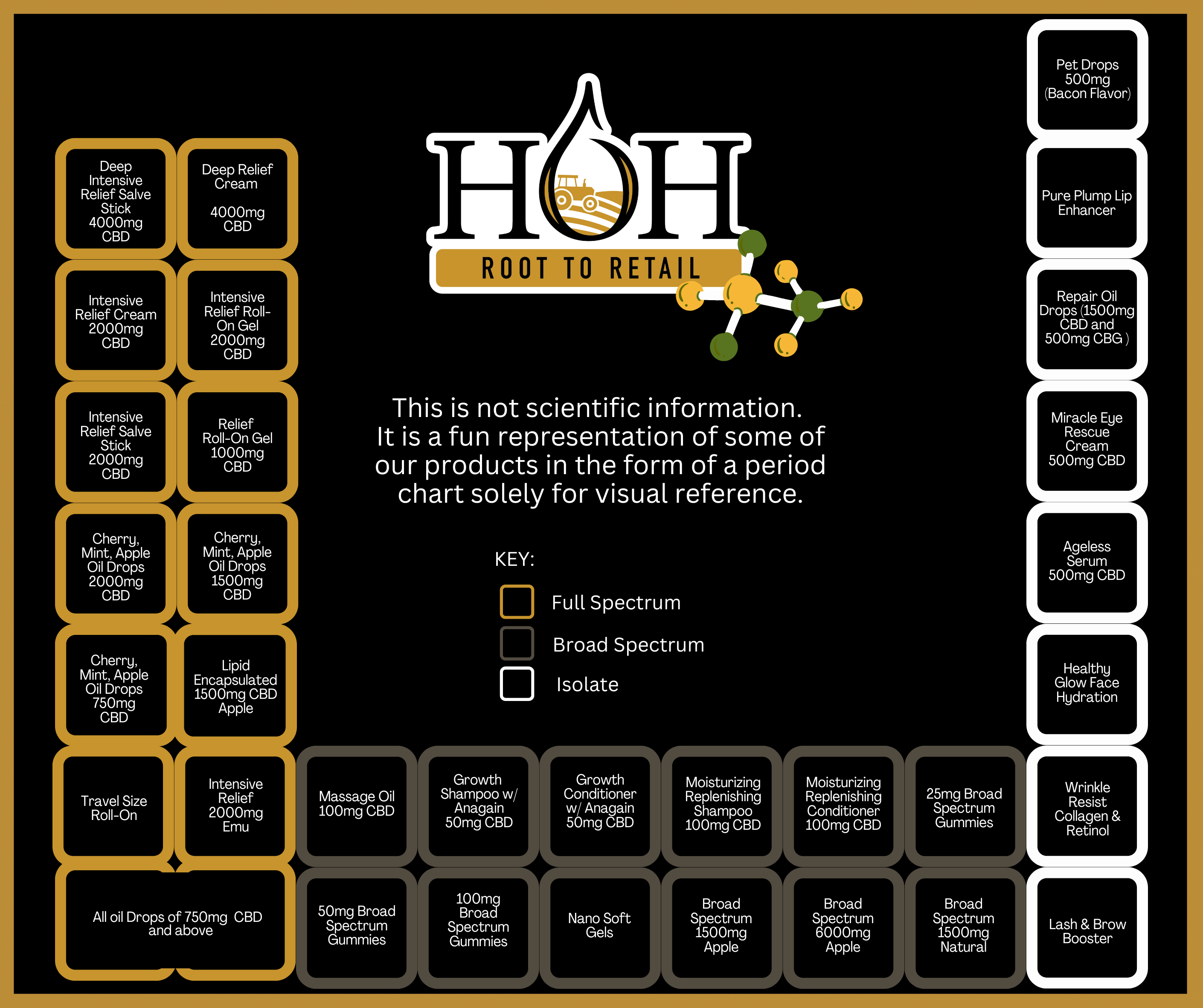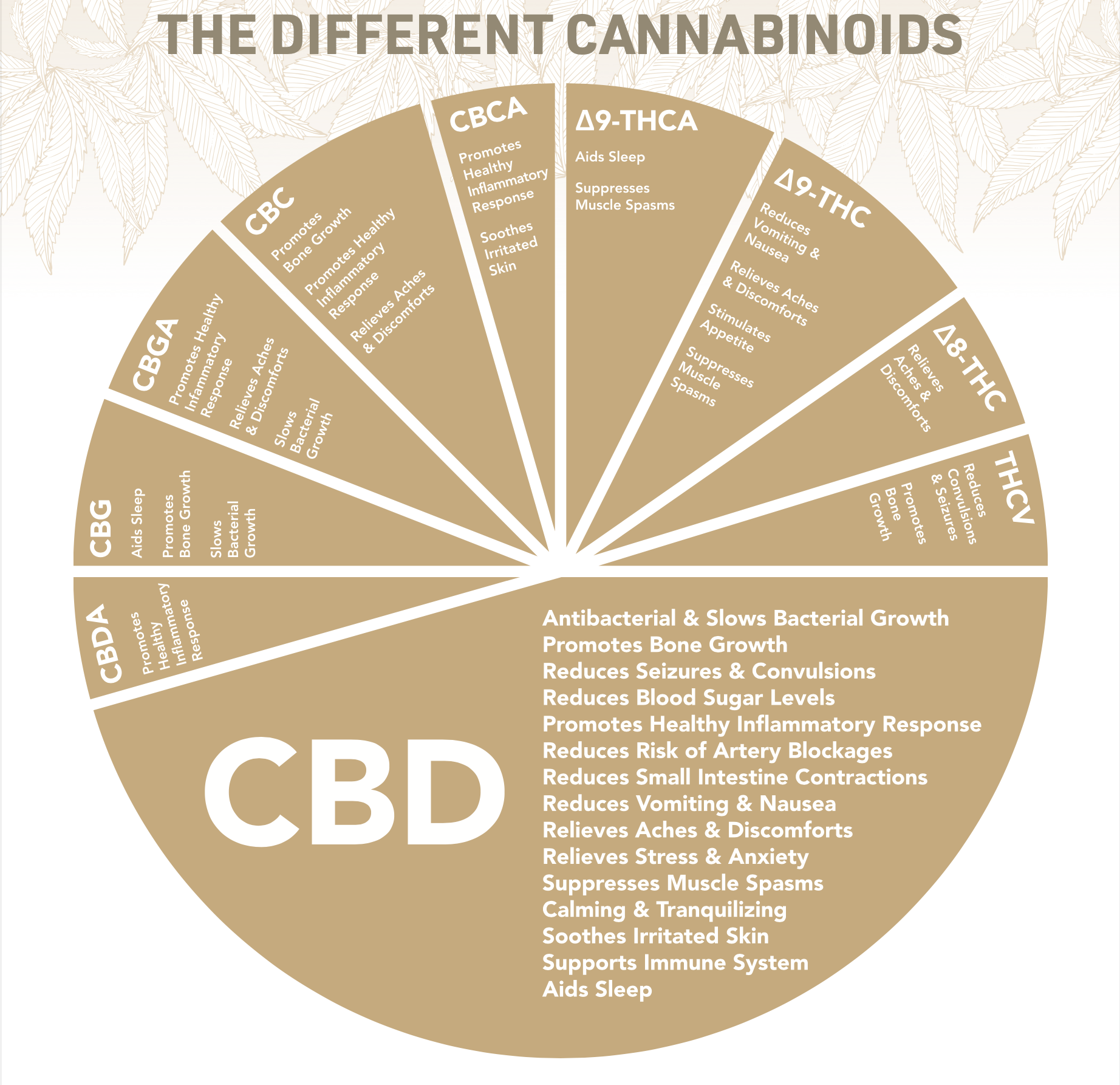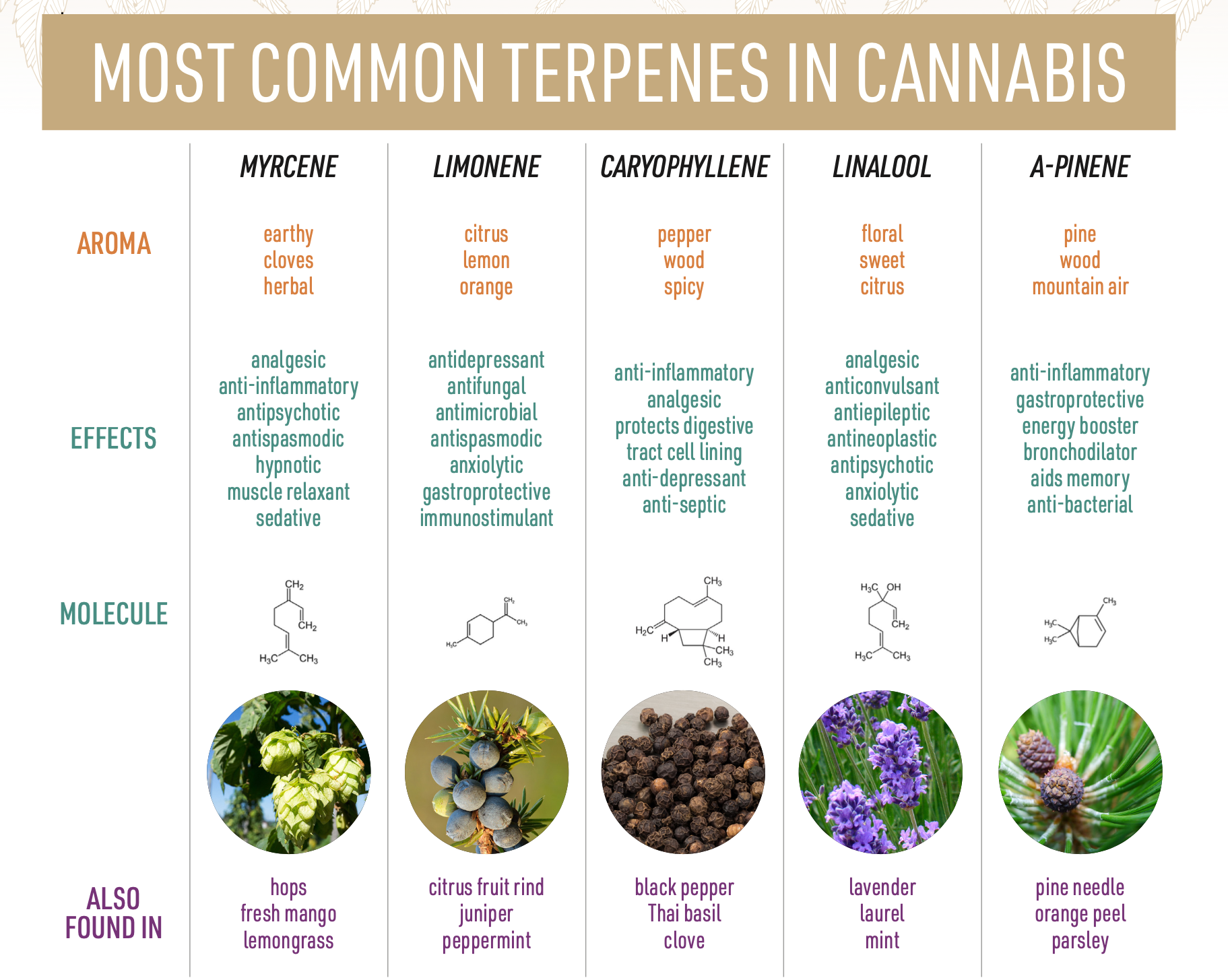
Since we offer such a diverse product line, we get inquiries about the difference between Full Spectrum, Broad Spectrum, and CBD Isolate.
We've created our own “Periodic Table” to display our products' relativity to these three different CBD breakdowns. This isn’t scientific; just a fun and visual way to understand the specific types of CBD in each of our products. If you want full product details, we have COAs (Certificates of Analysis) attached to all of the products within our online store.
Instead of the customary s-block, p-block, d-block, and f-block, we’ve changed our table blocks to FS-block, BS-block, and I-block (as if you didn’t already get sweaty palms at the thought of traditional chemistry).

First of all, what does CBD stand for? Cannabidiol (the most abundant cannabinoid in hemp).
For decades, CBD has taken a backseat to its more famous cousin, THC. CBD is now taking the world by storm as healthcare providers and the general public begins recognizing the abundant ways CBD can provide relief and contribute to optimal health and wellness.
Today, consumers are discovering the plethora of uses for CBD—from topical applications to CBD oil drops to CBD beauty products and even CBD coffee. [Our HILT JAVA is among the tastiest coffees on the market]. 😉
With many applications, it’s essential to understand the different types of CBD, how they benefit health, and which might be right for you.
In subsequent articles, we will deep-dive into some of the science around these benefits. For now, allow us to simplify the top-tier trio of cannabidiol.
CBD Isolate
CBD Isolate is the purest form of CBD available. CBD Isolate is produced by removing all other compounds from the plant – terpenes, flavonoids, and other cannabinoids, including THC. This form of CBD is best used for those concerned with drug testing at their place of employment or who have a sensitivity to THC.
Full Spectrum CBD
The most commonly purchased CBD oil on the market is Full Spectrum CBD. This form of CBD provides the consumer with a “full spectrum” of cannabinoids, terpenes, essential oils, and even trace amounts of THC. The combination of these components is called the “entourage effect.”
The Full Spectrum and the ‘Entourage Effect’ is when everybody in the group shows up for the party! This means no one is left out in the extraction process. The other cannabidiol compounds in the hemp plant are also extracted together. This includes terpenes, flavonoids, and other cannabinoids, including trace amounts of THC. The “entourage effect“ is when the properties and benefits of CBD are boosted by the fact that these other cannabinoids and terpenes are present and accounted for and working together.
Compared to the aforementioned CBD Isolate, Full Spectrum CBD is a more robust oil due to the power-packed combination of the plant. Think of it as the entire Marvel character roster showing up to help. It’s powerful, yet there are times you don’t necessarily want every single superhero fighting your battle (I mean, some of those guys and gals are intense)!
A minimal amount of THC (compliant with less than 0.3%) is found in Full Spectrum CBD because the THC is not removed during the extraction process (remember, no one is excluded from the party).
Broad Spectrum CBD
Broad Spectrum CBD is also a form of cannabidiol that contains terpenes and a variety of cannabinoids to create a “broad spectrum” of naturally occurring compounds. However, one active ingredient gets removed after the extraction process—THC.
This extraction of CBD is best for those that want more than just CBD Isolate but are either hesitant to have any THC in their product or live in states with strict THC laws.
Here are a few other superheroes you should know about:
Cannabinol (CBN) – a cannabinoid made from oxidized THC. The longer raw cannabis matures, the more CBN it will create from THC. It’s known for its relaxing qualities.
Cannabigerol (CBG) – a non-intoxicating cannabinoid produced from cannabigerol acid during decarboxylation.
Cannabidivarin (CBDV) – a minor cannabinoid with a molecular structure similar to that of CBD.
Cannabidiol acid (CBDA) is the 2-carboxylic acid form of CBD and an essential ingredient in raw cannabis.
Cannabichromene (CBC) – a cannabinoid that particularly comes from tropical-region cannabis; it is helpful for various beneficial reactions.
In addition to THC and CBD, other cannabinoids like Cannabigerol (CBG), Cannabinol (CBN), Cannabichromene (CBC), and more come together to create the “cannabinoid spectrum.”
Each cannabinoid has different abilities and health attributes, and together they work to create excellent benefits and aid in many areas of well-being. The more cannabinoids and terpenes present, the more they collaborate to do their job. Kind of like…you guessed it—superheroes.

Below are the most common terpenes in cannabis (Source: Our HOH CBD Education Booklet]:

Lastly, a quick visual reference to also help you make decisions about which HOH CBD products are best for you.

Stay tuned for more articles exploring the science of the amazing hemp plant. We will be inviting our brilliant scientific colleagues to contribute to this conversation.
Until then, reach out if you have any questions.
Disclaimer
The products on this site are not for use by or sale to persons under the age of 21. Furthermore, they should be used only as directed on the label, and should not be used if you are pregnant or nursing. Always consult with a physician before use if you have a serious medical condition or use prescription medications. In general, a doctor’s advice should be sought before using this and any supplemental dietary product. Finally, all the statements on this site have not been evaluated by the FDA, nor are they intended to diagnose, treat, cure or prevent any disease.

1245